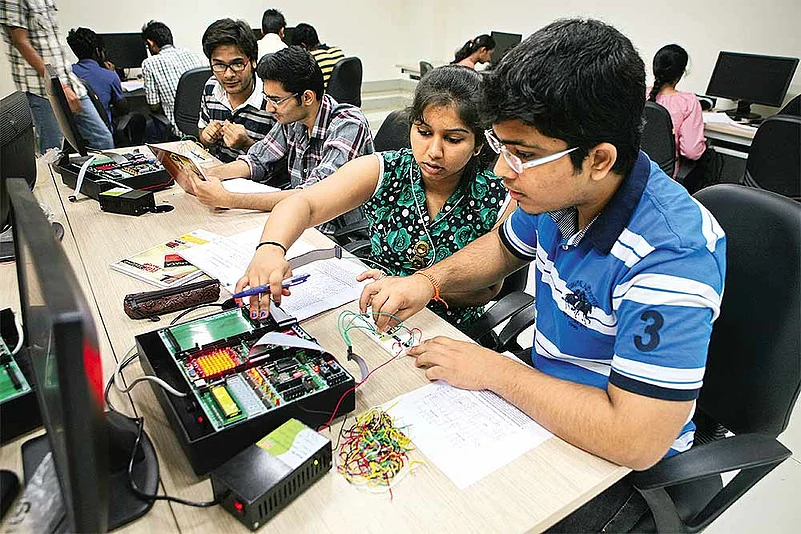The higher education system’s mandate is to provide equitable and affordable quality opportunities to all who deserve and desire such education. Given the mind-boggling scale of the demand, the private sector’s participation is definitely a welcome move. India has one of the world’s largest higher education systems, but it is still not adequate. Since 2003, India has apparently been adding more than 1,000 private colleges every year. Lacking in quality control, this expansion did not quite contribute to skill development or boost the nation’s ‘knowledge economy’, and the private sector mostly remained the second-rate, fallback option for the desperate. As the number of ‘educated’ unemployed kept on growing, some of these teaching shops died their natural death.
In recent years, however, some old private brands have been re-inventing themselves, with fresh investments in quality faculty and research, scholarships and so on. The new standards have primarily been defined by a few independent philanthropic interventions. More such interventions are needed for paradigm-shifting experimentation towards excellence, which the government often cannot risk as it spends taxpayers’ money and is hence bound by safe rules. Students in Indian institutions have traditionally studied subjects in silos, as the system mostly did not allow for the multidisciplinary and interdisciplinary approach to learning.
Realising much ahead of the herd that real problems need real solutions, the Shiv Nadar University started in 2011 with a multidisciplinary, ‘liberal studies’ curriculum, offering an excellent mix of science, engineering and social science teaching and research. One can’t be a problem-solving engineer, for example, without understanding the social context. Similarly, policy-making on key issues often needs to be science-driven—a slightly expensive proposition, as cutting-edge science and technology research often needs heavy resources. But there cannot be any short-cuts if we wish to deliver what is needed.
Learning has to be curiosity-driven and enjoyable. The ‘liberal studies’ approach allows learners to experiment and find their passion. With the job market changing fast, critical thinking and creative problem-solving are key skills we need to impart. In the new institutions, curriculum content is dynamic and flexible, and the mode of delivery active or participatory, with students ‘learning by doing’. Even undergraduate students are encouraged to grasp the nuances of research and innovation, while we strengthen their foundation with a broad multidisciplinary approach and provide a depth of learning in a major subject.
And yet a growing number of fee-paying Indian students go abroad even at the undergraduate level—the high cost is not a deterrent. While ‘reputation management’ is a serious issue, to build people’s trust in India being a safe and welcoming country, we need to go for serious accreditation and benchmarking of our institutions to make our country a higher-education destination. We need to hold all the institutions accountable in a transparent, fair and progressive manner. Private institutions have strong in-built internal accountability. We should bring in healthy competition to the public- and private-funded universities. Global rankings are one way, but their focus on uniformity of parameters may narrow the diversity that universities need for innovation in every sphere—in strategy, curricula, pedagogy and research. We should find and retain some unique advantages of the Indian higher education system.
The country urgently needs a global and contextual vision plan, and a competent leadership with the necessary resources to carry the plan through. The system needs to be rebuilt with strong, equitable and credible partnerships—national and international, academic and industrial, public and private—besides intra-institution (interdisciplinary) to inter-institution collaborations for innovation and research excellence, capacity-building and training the trainers, better teaching tools, enhancing students’ employability, and connecting education to issues of livelihood and sustainability of future generations. This is the only way forward.
(The writer is vice-chancellor, Shiv Nadar University)





















